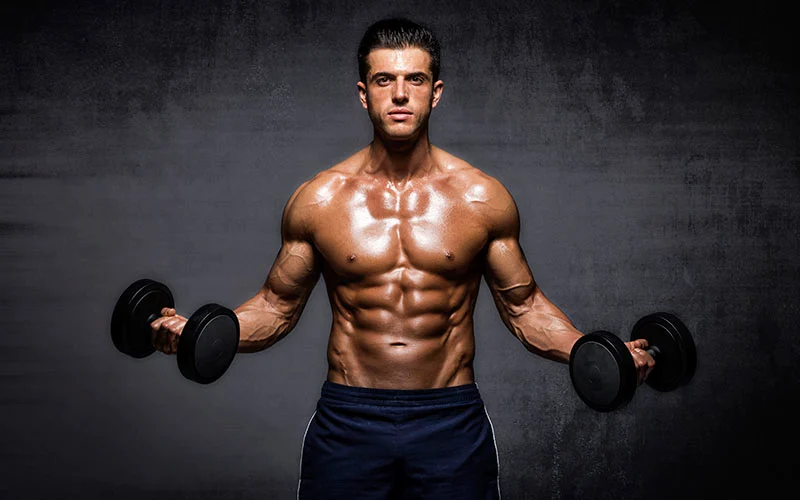Lower chest development deserves your attention
Building a strong chest goes far beyond doing endless sets of bench press. The lower chest, often overlooked, plays a vital role in shaping a well-balanced upper body. It gives your pecs that firm, sculpted drop that separates an average-looking chest from an impressive one. The truth is, most people don’t train it deliberately. And if they do, they often use the wrong angles or techniques. A targeted lower chest workout can change that, and it doesn’t need to be complicated.
The lower chest responds best to precision, not guesswork
The pectoralis major is a large muscle with different fibers that activate based on the direction of resistance. The lower portion—also known as the sternal head—gets activated when you push from a decline angle or when arms move from low to high across your body. Most regular pressing movements like flat bench or standard push-ups don’t emphasize this region enough. That’s why a good lower chest workout uses specific angles and smart movements. These routines aren’t gimmicks—they’re grounded in basic physiology.
Start every session with structure and intention
Before jumping into any routine, warming up your upper body is non-negotiable. Gentle arm circles, banded chest stretches, and a couple of light push-ups help loosen the shoulders and activate the chest muscles. It’s not just about safety—it also improves performance. Your lower chest workout should include 3–4 exercises, ideally performed twice a week. Maintain good form, moderate weight, and focus on contraction. More isn’t always better. What matters most is how well you perform each movement.
Routine 1: Decline push-ups still pack power
This old-school bodyweight move works better than many give it credit for. Just elevate your feet on a bench or step, and keep your hands flat on the floor. The incline created by your legs shifts the emphasis downward, naturally targeting the lower chest. Keep your core tight and your back straight. Slow down the movement for extra control. You don’t need a gym—just proper alignment and consistency. As you get stronger, add a backpack with books for resistance.
Routine 2: Decline bench press builds real size
If there’s one lift that should be in every lower chest workout, it’s the decline bench press. Unlike the flat version, the downward angle directs the load straight through the lower pec fibers. Use a barbell if you want to build heavier strength, or dumbbells if you prefer greater range and control. Don’t rush your reps. Lower the weight steadily and focus on squeezing your chest as you press upward. Avoid locking out fully to keep the tension where it belongs.
Routine 3: Dips are a lower chest secret weapon
Many lifters underestimate dips. While often labeled as a tricep movement, they can be one of the most effective exercises for the lower chest—if done right. The trick lies in leaning slightly forward and flaring the elbows a bit. This subtle change shifts the workload onto the pecs. Keep your reps clean and controlled. For beginners, use an assisted dip machine or a band for support. For experienced lifters, weighted dips can provide unmatched muscle-building stimulus.
Routine 4: Dumbbell decline press adds balance
Barbells are great, but dumbbells offer something more—independence. Each side of your body works on its own, revealing and correcting imbalances over time. The dumbbell decline press combines the benefits of angle, control, and stretch. Lower the dumbbells with a slight inward arc, as if you’re hugging a barrel. At the top, don’t smash them together—pause just before they meet and hold for a second. This small pause builds better mind-muscle connection and increases overall tension.
Routine 5: Low-to-high cable crossover finishes strong
No lower chest workout is complete without a finisher. The low-to-high cable crossover does exactly that. Set the pulleys low, step forward slightly, and pull each handle up and in, mimicking a scooping motion. Unlike free weights, cables apply constant tension, keeping your muscles engaged throughout. This move not only carves detail into your lower chest but also stretches and contracts the muscle in one smooth motion. Keep your reps slow and steady. Focus on the squeeze, not the weight.

Putting it all together into a realistic plan
Now that you’ve got five solid exercises, it’s time to make them work for you. Start with two sessions per week dedicated to lower chest emphasis. Combine three of the five exercises in each session, mixing bodyweight and weight-based movements. A sample session could include decline push-ups, dips, and cable crossovers. Another might rotate in the barbell or dumbbell press. Stick to 3 sets per exercise and aim for 8–12 reps. Rest around 60–90 seconds between sets. What matters most is consistent effort.
Don’t fall for these common mistakes
Many people unknowingly sabotage their lower chest workout progress. One major mistake is ignoring decline angles. Flat pressing movements dominate most routines, leaving the lower chest undertrained. Another issue is ego lifting—using too much weight and sacrificing form. This not only reduces chest activation but increases injury risk. Also, don’t overlook bodyweight moves. Decline push-ups and dips are incredibly effective when done with control. Finally, skipping rest and nutrition hinders growth. Training without recovery is just spinning wheels.
Nutrition and rest matter as much as reps
A great workout means little without proper fuel. To grow your lower chest, your body needs calories—especially protein. Aim for balanced meals with lean proteins, healthy fats, and complex carbs. Hydration also affects muscle function, so drink enough water throughout the day. Sleep is your real secret weapon. Most muscle repair and growth happens during rest. Aim for 7–9 hours of quality sleep each night. If you’re not recovering, you’re not progressing.
Real change comes from consistent training
You don’t need to spend hours in the gym to build a strong lower chest. What you need is the right set of routines, good form, and a commitment to show up each week. The five exercises listed here are chosen because they work. They cover angles, resistance types, and difficulty levels. Whether you’re just starting out or looking to improve definition, a dedicated lower chest workout can help you move closer to your fitness goals. The results won’t be instant—but they will be worth it.
Stay patient, stay focused
Fitness isn’t about magic tricks. It’s about smart routines, done consistently. If you commit to training your lower chest just like any other muscle group, you’ll see change. It might be subtle at first—a better line under your pecs, a tighter feel when flexing. But over time, these small shifts add up. A stronger lower chest is within reach. All it takes is the decision to start, and the discipline to keep going.
Why Should You Focus on Lower Chest Workouts?
What are the benefits of a lower chest workout?
Focusing on your lower chest workout helps in creating a fuller, more chiseled look. It also adds to the strength of your pectorals and improves posture and upper body performance. For bodybuilders, it’s essential for symmetry, while for general fitness lovers, it enhances overall upper body aesthetics.
Is it necessary to isolate the lower chest?
Yes — although many compound movements like bench presses hit the entire chest, specific exercises like decline presses or dips allow you to directly target the lower pectoral region, ensuring a more defined lower chest line.
What Are the Best Lower Chest Workouts for Beginners?
Which lower chest exercises are suitable for beginners?
If you’re just getting started, it’s best to keep things simple. Here are some safe yet effective beginner-friendly exercises:
- Decline push-ups (great for home workouts)
- Cable crossovers (with a downward motion)
- Incline dips or chest dips (using parallel bars)
Start with light weights and high reps to build endurance and proper form.
How to Improve Lower Chest Definition and Shape
How can I get a more defined lower chest?
Definition comes from two key elements: muscle building and fat reduction. While strength training helps shape the chest, reducing body fat through proper diet and cardio will help those muscles show through.
Try adding:
- Decline dumbbell press
- Underhand cable press
- Bodyweight dips
These build the shape, but make sure you’re also controlling your calorie intake for visible results.
Will lower chest workouts reduce chest fat or gynecomastia?
This is a very common concern. Lower chest workouts can improve muscle tone and give the appearance of firmness, but they won’t directly remove fat or treat gynecomastia (a medical condition). For fat loss, focus on overall calorie deficit and cardio workouts. In severe cases of gynecomastia, medical intervention may be required.
How Often Should You Train Your Lower Chest?
How many times a week should I work on lower chest?
Twice a week is a safe starting point. Make sure to give your chest 48–72 hours to recover between sessions. Overtraining can lead to fatigue and poor form, which may reduce results or cause injuries.
Should I train the full chest or split it into upper, middle, and lower?
Both methods work. Beginners can start with full chest days. As you advance, a push-pull-legs (PPL) or body-part split routine can help you isolate lower chest more effectively and train it with higher volume.
What Role Does Diet Play in Lower Chest Progress?
Can I reduce lower chest fat with exercise alone?
No, targeted fat loss isn’t possible. You must follow a balanced diet with a caloric deficit to reduce overall body fat. Only then will your hard-earned muscle definition show.
FAQs
How soon will I see lower chest changes?
If you’re consistent with your lower chest workout and your diet, visible results can begin to show in 4 to 6 weeks.
Can I grow my lower chest without a gym?
Yes, you can. Decline push-ups and bodyweight dips are excellent at-home options for targeting the lower chest.
How often should I train my lower chest?
Training it 1–2 times per week is sufficient for most people. Focus on quality, not just quantity.
Is it necessary to do decline bench press?
It’s highly effective, but not essential. You can substitute with dumbbell decline presses or even dips.
What’s the best finisher for lower chest?
The low-to-high cable crossover is ideal for ending your session with a deep burn and added definition.
